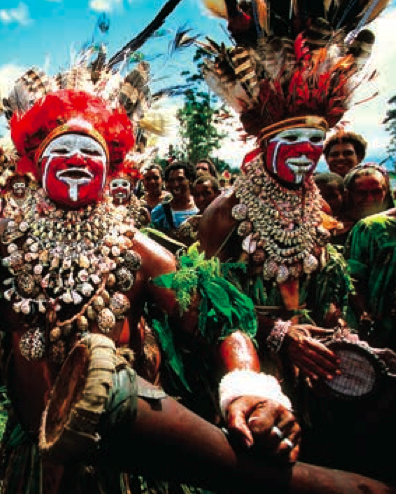Christine Retschlag reports on eight of PNG’s most outstanding festivals and shows.
In this land of legend, lore and more than 800 local languages, tradition beats like an ancient kundu drum. This drumbeat has resonated through the generations who call Papua New Guinea home, and it is communicated and celebrated through colourful festivals, events and shows. It’s etched as deeply as the crocodile scars of the warriors of Sepik, who celebrate the ancient dinosaur at their annual festival; it’s beneath the unmistakable masks of the people of Goroka; the frangipani scent of a rebuilding Rabaul; and the sea spray and stories of the Motuans of Milne Bay.
1. National Mask and Warwagira Festival 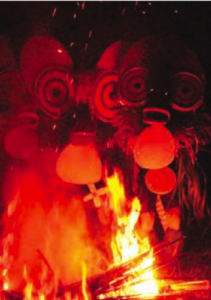
When: July 15-19, 2015
Where: Kokopo in East New Britain Province.
About: One of the most enduring images of PNG is that of its masks. This annual event celebrates the mask cultures of East New Britain, New Ireland and other regions, which use these face coverings as a form of cultural expression. The five-day festival begins at dawn with the arrival of the Kinavai, which signifies the landing of the Tolai people in East New Britain. The Tolais perform their Baining Fire Dance during the festival in which initiated young men dance through fire while their elders chant. Sacred masks, which have been cleansed for the festival, are on display during the event, which showcases cultural dancing, ritual performance, display, story telling and exchange, and arts and crafts.
More information: There are a number of hotels and resorts in Kokopo, including Rapopo Plantation Resort, Kokopo Beach Bungalow Resort, Gazelle International Hotel and Talkam Lodge. Some organise tours to the festival.
See rapopo.com, kbb.com.pg, gazelleinternationalhotel.com, talkam.com.pg.
2. Crocodile Festival 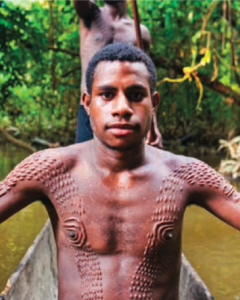
When: August 5-7, 2015
Where: Ambunti, in the East Sepik Province
About: The crocodile is a revered animal totem of
the Sepik people. It is said that men share a special
bond with this ancient dinosaur, which is believed
to represent strength, power and manhood.
So respected is this reptile that skin-cutting
initiations continue in these communities and
men proudly wear scars – which run from
shoulder to hip and resemble the back of a
crocodile – earned during their rite of passage.
The three-day Crocodile Festival celebrates the
special bond between man and beast along the
unpolluted rivers of Sepik, which is believed to be
home to some of the world’s largest freshwater and
saltwater crocodiles.
More information: Sepik Adventure Tours specialises in tours along the Sepik River and Wewak Town. There are also a number of boutique hotels, guesthouses and lodges in Sepik.
See sepikjourneys.com.
3. Hagen Show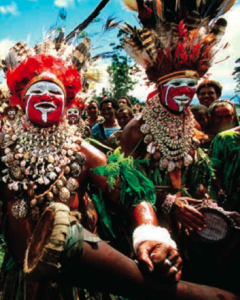
When: August 15-16, 2015
Where: Mount Hagen in the Western Highlands Province.
About: Long before PNG’s independence in 1975, this highland region was staging this event, which started in 1961, in a bid to unify tribes.
It attracts tribes people from all over the Western Highlands Province and those from neighbouring tribes in the Highlands region, who gather to celebrate culture through traditional dances, singing and ritual. Arts and crafts are also on display at this colourful show at which local entertainers from the modern music scene are invited to perform. Mount Hagen is PNG’s third-largest city and it was named after its old volcano.
More information: Trans Niugini Tours operates tours to the Hagen Show. There are a number of hotels, motels, lodges and guest houses in Mount Hagen.
See pngtours.com.
4. Goroka Show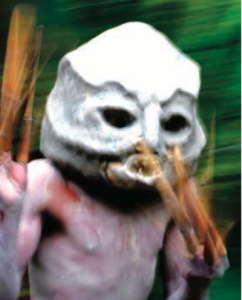
When: September 11-13, 2015
Where: Goroka in the East Highlands Province.
About: The mud-masked men of Goroka are arguably one of the most recognised images of PNG and this culture is celebrated at the Goroka Show. Launched in the mid-1950s by missionaries, more than 100 tribes from the highlands now perform traditional song, ritual and dance at this event. Australian patrol officers (kiaps), originally organised the show and brought in sing-sing groups from surrounding areas. The Goroka Show is considered the best-known tribal gathering and cultural event in the country.
More information: The Bird of Paradise Hotel in the centre of town is considered a Goroka landmark. The hotel can organise tours to the Goroka Show.
See coralseashotels.com.pg/locations/bird-of-paradise-hotel.
5. The Frangipani Festival
When: September 13-14 & 16, 2015
Where: Rabaul, East New Britain Province.
About: This fragrant festival was born from tragedy. When Rabaul’s active volcano, Tavurvur, erupted for the fifth time in its history in 1994, it buried much of Rabaul Town in four metres of volcanic ash. But resilience is king in PNG and the first flower to bloom after the eruption was a frangipani tree.
This festival celebrates Rabaul’s revival and is held over the Independence Day weekend and on Independence Day itself. Highlights include a float parade, dance, sing-sings and rock bands on Saturday, a commemorative church service on Sunday and a canoe race around the rock formation known as the Beehives in Simpson Harbour on Independence Day.
More information: Kokopo Lodge and Tours offers hostel-style accommodation with its 23 single, twin and double rooms, with shared showers and toilets and a conference room. Owned by local Tolai people, it owns a high-roof, air-conditioned bus through which guests can partake in a variety of tours, including to the Frangipani Festival.
See kokopolodge.com.
6. Hiri Moale Festival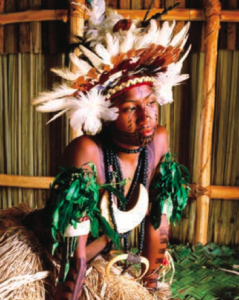
When: September 15-16, 2015
Where: Ela Beach, Port Moresby.
About: Staged on the ancestral ground of the Motuan people of PNG, this festival celebrates the epic voyages of their seafaring ancestors, who journeyed to the Gulf Province on the iconic lagatoi. This large sailing canoe was built with a number of hulls in which clay pots made by the Motuans were stored and later traded for sago with the people of the Gulf. A number of other goods were also exchanged during the “Hiri” trades, which were often fraught with difficulty, due to storms and rough winds.
The Motuan culture is rich in songs, dance and rituals, which reflect on this trade and also relate to celebration, lamentation and tributes to gods and ancestors. Not only are the Motuan people celebrated during this festival but other tribes with whom they traded throughout history including the Gulf, Mekeo, Hula and Koiari people. Another highlight of the festival is the Hiri Hanenamo contest, in which young Motuan women compete to be crowned Hiri Queen, based on their knowledge and display of traditional Motuan culture.
More information: A number of tour operators take visitors to this festival, including Ecotourism Melanesia.
See em.com.pg.
7. Kenu & Kundu Festival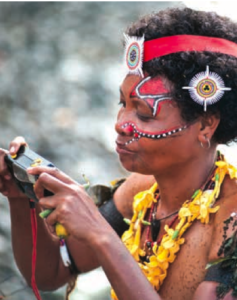
When: November 6-8, 2015
Where: Alotau, Milne Bay Province.
About: This is the land of canoes and kundu drums, which have been used for centuries in traditional ceremonies and rituals in Milne Bay. Constructed from specially crafted wood under strict customs, the war canoes were built to ensure victory and those used in the festival are built using the same techniques as the ancestors of this region.
Tribes are identified through colours and patterns painted on the canoe and prizes are awarded to winning groups a day earlier at Watagaway Island, before the canoes sail in convoy to Alotau for the festival’s opening ceremony. This event also includes traditional dancing from all around the Milne Bay province, including eastern parts of the Papuan Region, arts and crafts displays, string band competitions and traditional and contemporary drama performances.
More information: Locally owned dive and tour operator Reef Tours Milne Bay operates tours of the region.
See loihai.com.
8. Madang Festival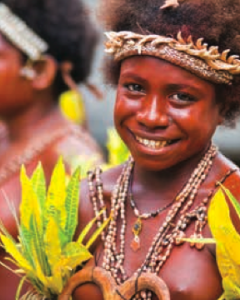
When: June, 2016
Where: Madang on the northern mainland coast.
About: Regarded as PNG’s most popular province with visitors due to its diving, snorkelling, surfing, nature and history, Madang is home to six distinct cultural groups. This festival celebrates the variety of ethnic groups who live in harmony here, including the Simbai people who hail from the interior highlands of the province.
More information: Air Niugini offers daily services from Port Moresby to Madang. There are a number of resorts and hotels in Madang, including the Madang Resort.
See papuanewguineatravel.travel and madangresort.com.
Paradise Magazine, July/August 2015

